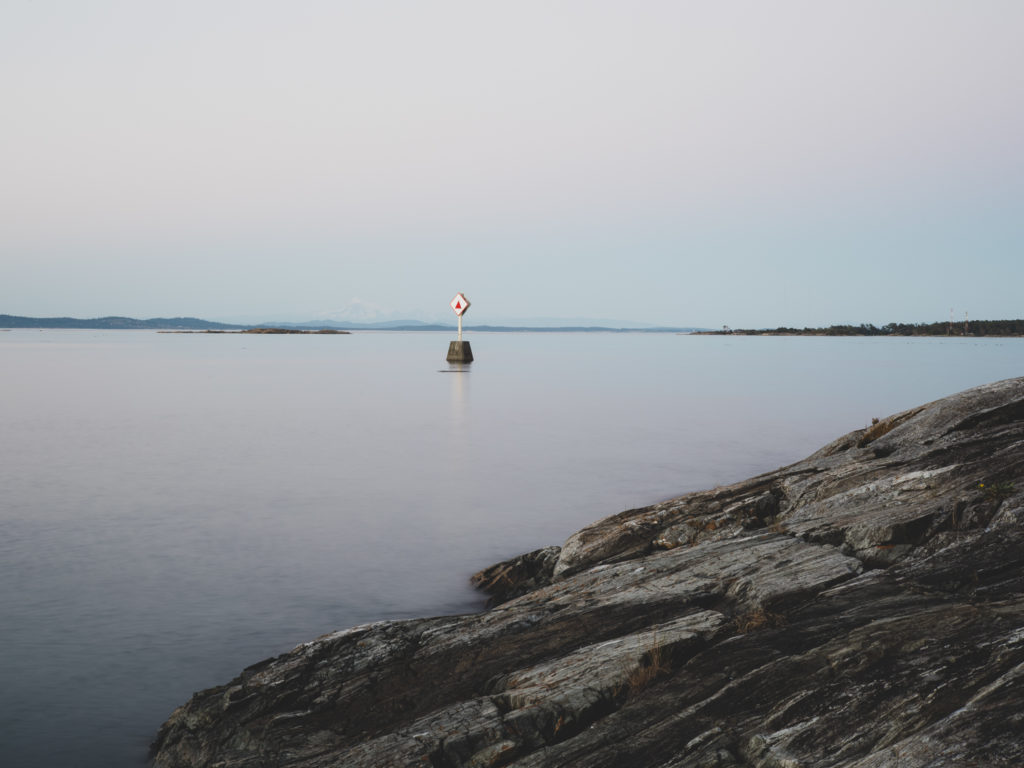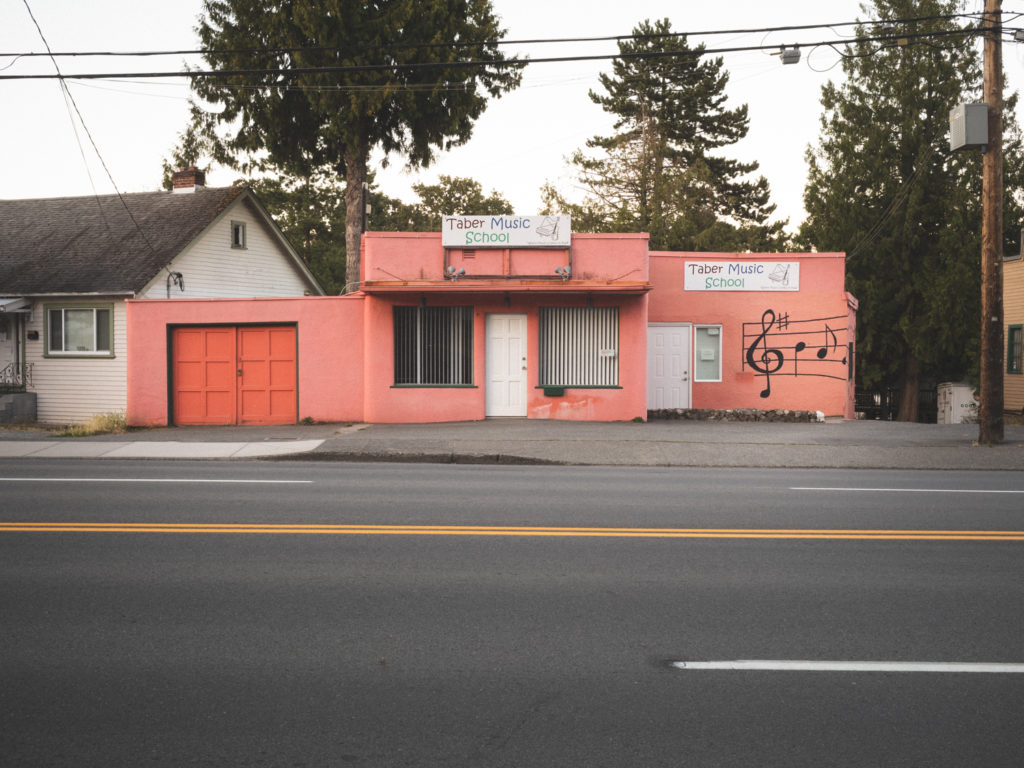Canadian artist and photographer, Quinton Gordon connects the beauty of nature to global concerns driven by human action. As a resident of Vancouver Island, Quinton has been documenting the transformation of the surrounding environment as it continues to attract a growing population of residents and visitors, alike. Quinton reveals his perception of the quiet Vancouver Island documented with the Leica M10-R.

1. Tell us about the series of images you made using the Leica M10-R.
For several years now, my work has been focused on the area I live, Vancouver Island, on Canada’s west coast. It’s an area of great natural beauty and ecological significance, but it’s also under great pressure from a growing population. The relatively mild climate, the natural beauty, and more recently, the success we have had, limiting the impact of COVID-19, have made the island a very attractive place and folks are moving here in larger numbers, resulting in greater tension between development and the natural environment. For this series, I’m exploring this tension through commonly found scenes that reflect our hand in this landscape. It’s not an uncommon theme as we face global concerns around the impact of human activity on the environment, but I don’t want to show the myth of the untouched landscape here. I’m interested in common, often unattractive objects or scenes aestheticized through photography and how that changes the way we think about the world around us. We need to find a way to live in this landscape without destroying what attracts us to it, all of my work is really about investigating that idea in different ways.
2. What or who influences your own visual stories?
Two of the photographers I admire most are Edward Burtynsky and Nadav Kander and I would have to credit them for having a significant influence on my thinking around photography. What has perhaps influenced me more directly with this new work is my long-standing interest in the shift in photography that came out of the 1975 New Topographics exhibition with Robert Adams, Lewis Baltz, Bernd, Hilla Becher, Joe Deal, Frank Gohlke, Nicholas Nixon, John Schott, Stephen Shore, and Henry Wessel. Early in my career, I discovered that I was far more interested in what I found commonly around me as opposed to the iconic view, and the idea of the “man-altered landscape” that was coined in that exhibition, really interests me. Humans now have a significant touch on virtually every corner of the planet, and it’s particularly important for us to look critically at our impact on the environment and how we choose to move forward. I like the direct aesthetic of this work and in my own practice am striving to navigate the line between documentary and art that can help open up and contribute to the dialogue.

3. How did the M10-R fit your workflow and photography style?
With this camera, I feel like I have two cameras in one, and that took a little adjusting in my thinking. I’ve worked with M cameras since I bought my first M4-P in 1992 and I have always valued the advantages of these nimble cameras, in particular for classic B&W documentary-style work. But over the last five or six years, I’ve been drawn to more of a medium format or view camera way of working. A slower, often tripod mounted, and deliberate way of working, and with this camera, I really feel that I have both. It merges the benefits and tradition of an M rangefinder with the capability to make images that rival larger formats.
On a practical level, where I live means that getting large format film processed is time-consuming and expensive because I have to ship it away, so over the last year I’ve found real benefit in the digital workflow and keeping the workflow contained in my own studio from image processing through to final prints, so the M10-R fits perfectly with my desire to have image quality and this workflow.
The timing of this camera could not have been better for me. Over the last five years, I have been working almost exclusively in B&W, but in October last year, I shifted to working in color for a project entitled EDGE, which looks at the Salish Sea. For this work, I used the Leica SL which is a beautiful camera that produces stunning results, but for the next series, I wanted even more detail, dynamic range, and image depth. I had been considering the upgrade to the SL2 when Leica invited me to test the M10-R. It hits a sweet spot, bringing together incredible color rendering, improved dynamic range, detail, and the beautiful organic character that M lenses deliver. I’ve tested other systems for this project, and although those cameras and lenses yield excellent results, they can often be a bit clinical, and I really prefer the feel of the images from this camera. For me, it’s the perfect balance between detail and the way we see and experience the world as people.
4. What type of lens and other accessories did you use with the camera?
I’m still primarily using my main two lenses, a 35mm M-Summicron and the 50mm M-Summilux, which I love on this camera, that’s a special combination! I’ve done a bit with the 75mm M-Summicron, but the other two lenses really fit with how I see. I have been using the Visoflex on occasion with this camera and I like the ability to tilt the viewfinder up when the camera is lower, and for this particular project, the longish blackout period with the Visoflex is not such an issue, although I will welcome an update to this viewfinder if it comes. With the higher resolution of this sensor it’s also quite critical to have precise focus, especially at wider apertures, so this accessory can certainly be beneficial in some situations, but I still love seeing the world through the optical viewfinder of an M. I’m also glad that the M10-R has retained the spirit-level option, I’m definitely making good use of it. The combined features on this camera make it a truly versatile tool for a pretty diverse range of photographic opportunities which ultimately means I’m traveling lighter and staying focused on making the work with confidence in the results.
5. Explain the types of images you were making with the M10-R. What attracted you to that subject matter?
These images are really meant as metaphors for the tension between our desire for economic and social development, balanced against the cost and impact to the natural environment. My goal is to make aesthetically interesting images that draw the viewer into a dialogue about the dichotomy we are creating as we remove old-growth forest, pave more land, extract more resources and create more waste and pollution. I’m convinced that we can find a path to sustainable development, but it means recalibrating our value structure and I hope that in some small way the photographs I make are part of an invitation to systemic change.
Living in this incredible environment and trying to find my own balance between sustainability and the desire for comfort and lifestyle is really the catalyst to the work I’m doing. It’s by making these photographs that I’m more able to think about the choices I make and better able to articulate how important it is for all of us to have a more positive contribution to social and environmental sustainability. We’ve been rushing towards climate change since the industrial revolution and human expansion has gone largely unchecked long enough now that we are feeling the impacts more significantly. Weather events are intensifying, people are losing their lives to climate change and recently to a global pandemic. The evidence seems clear to me that if we don’t make changes soon it will cease to be an option. But I’m optimistic that we can embrace change, and that art offers an open invitation that takes people along with this idea rather than only judging them.
6. Out of all the images you made, which one speaks to you the most?
Well I feel like I’m really just getting started with this camera and after a few weeks beginning to know it’s capabilities and limitations, but the image of the construction containers by the seaside or the stacked road dividers against the trees, these really tap into what I’m interested in looking at right now. As I said, I live on Vancouver Island and this project is about the tension between nature and our desire for development. For me, these images really speak to the constant encroachment of humanity on natural spaces, and the graphic contrast or the repetitive form of something like the stacked divides against the trees really captures that tension for me but in a way that is somehow visually attractive.
7. What is one feature of the Leica M10-R you are most impressed with?
It’s the color rendering and the sense of dimension from this new sensor. I’ve found that Leica digital cameras generally look less digital than other systems, but with the M10-R it really struck me from the first frame I shot that there was something special about how this new sensor renders the world. For me, it’s like digital Kodachrome, incredible detail, great dynamic range, and a full-color gamut. I started photography on Kodachrome and it was a demanding film in the sense that you had to really understand light and color to make beautiful images, there were no short cuts. It’s like that with the M10-R, it delivers a palette that, in my opinion, is unmatched by any other camera.
8. Do you find yourself reaching for cameras and lenses that go against the grain of your standard kit?
I grew up in a family of artists and have always had an interest and love of the materials and processes in photography. For me, there is a strong connection between the tools I use and the kind of image I’m making and I tend to flow between large format cameras using vintage brass lenses with alternative analog processes and the more fluid workflow of a small camera. Optically, my Leica kit has remained pretty consistent for three decades with most of my work in this format is done with 35 and 50mm M lenses. The camera bodies have updated over the years, beginning with my M4-P through M6 bodies and into every version of the digital Ms from the M8 until now the M10-R. I was introduced to the Leica M in the mid-’80s through a university classmate whose father worked at the Leica factory in Midland, Ontario. I had never even heard of Leica at that time, but he loaned me a camera for a weekend and I was hooked. Placing that rangefinder frame around the world just clicked for me and there was no turning back.
To learn more about Quinton Gordon, visit his website, or follow him on Instagram at @Quinton.Gordon.







Comments (0)